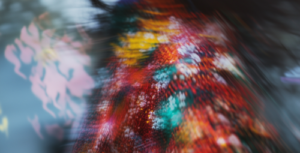24/10/2024
UPC 252/2023 NanoString v Harvard ACT_551180/2023 (UPC_CFI_252/2023)
The UPC’s Munich Central Division has recently issued their decision revoking Harvard’s EP 2794928 B1 (“the Patent”) in DE, NL, and FR. The decision is appealable. The NanoString decision offers a timely example on how the UPC may approach the question of inventive step of European patents. The Central Division found that a proposed amendment to Harvard’s EP 2794928 B1 patent lacked inventive step under Art 56 EPC. In reaching this finding, the UPC adopted an approach to the consideration of inventive step more in line with national law, than the EPO’s more granular problem-solution approach. We discuss the possible ramifications of this approach below, and note that UPC courts have the choice of following national or EPO style approaches to the question of inventive step, and may even develop their own approach within the framework of the Unitary Patent Court Agreement.
Background
The Patent EP2794928B1 was filed on 21 December 2012 and claims priority to US 201161579265P of 22 December 2011. The claims are directed to methods for detecting analytes in a sample. The analytes may be DNA, RNA or nucleic acids for example. The methods are applicable to a so-called “in vitro” and “in situ” assays, a point that is relevant for the consideration of inventive step. The expression “in vitro” relates to an assessment outside a normal biological system, e.g. using microorganisms or cells. This is different to an “in situ” assessment, which relates to more complex systems having a natural position, e.g. in a tissue).
On 29 July 2022, NanoString Technology Germany GmbH brought a revocation action against the German national part of EP2794928, while just over a year later, on 27 July 2023, and with the UPC now open, NanoString Technologies Europe Ltd brought a revocation action against EP2794928 at the UPC Central Division in Munich. At the UPC, NanoString argued that the Patent was invalid based on the grounds that its subject matter is not patentable pursuant to Articles 52 to 57 EPC (Art. 65(1),(2) UPCA in combination with Art. 138(1)(a) EPC), because the claimed subject-matter lacks novelty (Art. 54 EPC) and an inventive step (Art. 56 EPC).
On 7 May 2024, the BundesPatentGericht (BPatG) found that German patent to be invalid and revoked the German part of the patent. The decision of the UPC Central Division was handed down on 17 October 2024 and also found the patent invalid. The validity of the priority date was not challenged, and no opposition was filed against the patent at the EPO. The UPC decided not to await the (final) decision from the BGH following the revocation of the German part of the patent at first instance with the BPatG. This was despite NanoString Technologies Germany GmbH, i.e. the claimant in the German Revocation action, and NanoString Technologies Europe Limited, i.e. the Claimant of the present case, being related companies, and emphasises the separate jurisdictional nature of the UPC and national courts, and an overriding desire for procedural efficiency.
The Central Division found that the Main Request, directed to the claims as granted lacked novelty, because the claimed subject matter was disclosed directly and unambiguously in the prior art document D10. The Central Division’s assessment of novelty appears fairly uncontroversial, and in line with EPO’s “gold standard” of direct and unambiguous disclosure (EPO: Case Law of the Boards of Appeal LB at I.C.4.1 and II.E.1.3.1). Further, none of the auxiliary requests on file were considered patentable, with Auxiliary Request 1 lacking inventive step over D10 (Göransson et al.), and Auxiliary Requests 2 to 8 being considered to add matter.
The subject matter of the patent had partly been considered in related proceedings on EP4108782B1, a patent based on a second generation divisional application of the Patent. In September 2023, the UPC Local Division in Munich had granted a request for provisional measures (a preliminary injunction) based on EP4108782B1. However, the UPC Court of Appeal set this order aside, noting that “more likely than not the subject matter of the divisional Patent EP4108782 would prove to be unpatentable for inventive step over D10 (Göransson et al.).
The Central Division stated that for the assessment of inventive step, the principles as set out by the previous CoA NanoString/10x Genomics Order and in UPC_CFI_1/2023 and UPC_CFI_14/2023 (par. 8-2-8.10) were followed (See 11.10 of the decision).
Assessment of inventive step under the UPC
The section “legal framework inventive step” beginning at section 11.10 of the Decision provides confirmation of how inventive step may be assessed at the UPC.
Section 11.11 first repeats Article 56 EPC in stating that “An invention shall be considered as involving an inventive step if, having regard to the state of the art, it is not obvious to a person skilled in the art”, and section 11.15 notes that in answering this question it “is first necessary to determine a starting point in the state of the art.
[11.15] There has to be a justification as to why the skilled person would consider a particular part of the state of the art as a realistic starting point. A starting point is realistic if its teaching would have been of interest to a skilled person who, at the priority date of the patent at issue, was seeking to develop a similar product or method to that disclosed in the prior art which thus has a similar underlying problem as the claimed invention […]
There can be several realistic starting points. It is not necessary to identify the “most promising”.
The discussion of a suitable “starting point” under the UPC is similar to the requirements for selecting the closest prior art document under the EPC, in particular in view of the criteria for determining the closest prior art document as set out in the EPO’s Guidelines at G-VII 5.1. Paragraph [11.24] further notes that D10 Göransson et al “have a significant number of technical features in common and relate to a similar underlying problem. Therefore, Göransson et al is a realistic starting point for the assessment of inventive step”.
However, the UPC approach to inventive step (as discussed at point 11.16 of the decision and points 11.24 to 11.26 of the decision) subtly deviates from the EPO approach thereafter, in particular by leaving out considerations of the formulation of the technical effect and the objective technical problem to be solved. The decision does states in point 11.18 that a technical effect or advantage achieved by the claimed subject matter compared to the prior art may be an indication for inventive step, but considerations of a technical effect do not further appear in the reasoning of the decision. Although the selection of a suitable prior art document as a starting point requires consideration of “a similar underlying problem” this is also not necessarily the same problem as the “objective technical problem” for the assessment of inventive step under the EPO approach.
Instead, the Court’s view on inventive step is summarized in sections 11.25 and 11.26.
At section 11.25, the Central Division notes that Göransson et al (D10) and claim 1 of the First Auxiliary Request differ in that the claimed method is used in in situ. The order of the comparison (the teaching of Göransson et al is compared with the claim, rather than the claim with Göransson et al) is in keeping with national law (see below), but expressed the opposite way round to the EPO Guidelines at G-VII 5.2 which determine the objective technical problem to be solved by assessment of the difference between the “claimed subject matter and the prior art”. The difference in order can perhaps be understood as a matter of emphasis or focus, which for subjective questions like inventive step may conceivably have an effect. At 11.26, the court then state that “Starting from D10, it was obvious for the skilled person at the priority date to transfer the method of D10 to an in situ context, thereby arriving at the claimed subject matter”.
Although the Central Division approach is based on similar notions, such as whether there was a “motivation” for the skilled person to apply the prior art “in vitro” teaching of Göransson et al to “in situ” methods as well as the need to avoid hindsight, the UPC therefore makes a leap from the starting point and the difference, directly to the questions of whether the claimed invention was obvious. The EPO approach on the other hand requires the intermediate step of “establishing the “objective technical problem” to be solved, and “considering whether or not the claimed invention, starting from the closest prior art and the objective technical problem, would have been obvious to the skilled person”. By way of reference, the problem solution approach is defined at section G-VII- 5 of the EPO Guidelines.
Person Skilled in the Art
In the present case, the person skilled in the art was considered to be someone having a degree in biological sciences (or biochemistry) and several years of experience in the field of detection of biomolecules in biological samples. A skilled person having this background was considered to be familiar with both “in vitro” and “in situ” techniques for the detection of biomolecules, in which case, it follows that the transfer of the method of D10 to an “in situ” context is obvious. Although the Defendant argued that the skilled person would have faced a number of problems in the transfer of methods from in vitro to in situ, those issues were considered to be routinely solved by the skilled person. As ever, the selection of the skilled person is demonstrated to have an effect on the outcome of the inventive step test.
Comparison with National Courts
In this instance, the UPC has followed an approach like that used in national courts, like the UK and Germany. The UK’s inventive step assessment is set out in Pozzoli Spa v BDMO SA & Anor [2007] EWCA Civ 588 and Windsurfing International Inc. v Tabur Marine (Great Britain) Ltd, [1985] RPC 59 and may be seen as a somewhat abbreviated assessment of inventive step compared with the EPO’s three-step more rigorous problem-solution approach. For example, steps 3 and 4 of Pozzoli Spa require:
• Step 3: Identify what, if any, differences exist between the matter cited as forming part of the “state of the art” and the inventive concept
• Step 4: Viewed without any knowledge of the alleged invention claimed, do those differences constitute steps which would have been obvious to the person skilled in the art?
In the UK at least, the final question is often decided after careful consideration of expert evidence to establish the knowledge of the skilled person.
The UPC’s assessment of inventive step also appears to be in line with German Patent law. More specifically, § 4 PatG and the Examination Guidelines at 2.3.3.2.4 define the test for inventive step starting from the closest prior art (“Stand der Technik”), and also jump to the question of “is it obvious” without prior consideration of the differences/technical effect/problem under the EPO approach.
Conclusions
In this case, it is possible that the result of the national approach (adopted by the UPC) and the EPO approach to the question of inventive step would have been the same. As no opposition was filed at the EPO, though, this sadly has to remain a thought experiment.
However, since the answer to subjective questions (like whether something is obvious or inventive) often depends on both the facts and the interpretation of the facts (what does the skilled person know, and would they have been motivated to modify the prior art to arrive at the invention), the framework in which the facts are assessed and interpreted can conceivably affect the outcome. There is no estoppel between the EPO and the UPC so the same prior art can be used with possibly different effects in each forum.
Whether the UPC courts continue to adopt elements of the EPO’s problem solution approach into their assessment remains an interesting question, and means that third parties attacking patent validity have a choice of venues that may apply subtly different rules and approaches. We are looking forward to further decisions from the courts in future which may provide more clarity.
This content is for general information only. Its content is not a statement of the law on any subject and does not constitute advice. Please contact Reddie & Grose LLP for advice before taking any action in reliance on it.




